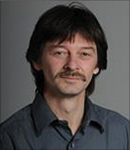We are in discussion with Stéphan Lelaidier, Chief Engineer for Grid Solutions Business, a GE and Alstom joint venture.

EET&D : Technology advancements have had a huge impact on our everyday lives across multiple industries. How has it already transformed the energy industry – and how will it continue to do so?
Lelaidier: : When you think of how technology has already impacted our everyday lives, you may think of services and products that help us save time, money and energy. These savings bring welfare to the world and, being more efficient, help preserve the resources of our planet.
Technology has the same potential to make the energy industry more productive, taking care of scarce sources of energy and minimizing impact on our environment. Some advancements in the energy markets already exist today, including electric vehicles, unconventional gas, solar PV and wind turbines, to name a few. However, to continue to meet growing energy demands worldwide, the energy grid must continually adapt to technological changes and advancements. Tomorrow’s technology innovations can bring more affordable options to consumers, such as battery storage, clean generation and distribution alternatives, and increased digitization of the grid.
For example, today’s home energy management platforms (HEM) – from solar to storage to electric vehicles – provide consumers with residential utility demand response programs, home automation services, personal energy management, data analysis and visualization, auditing and related security services. With a breadth of services at their fingertips, HEM platforms give consumers direct choice over technology for the first time, changing the rules of the games for incumbent utilities.
In addition, consumers are moving toward an off-grid approach by utilizing battery storage, which further affects utilities’ bottom lines. But while off-grid solar energy may be great for consumers with low energy consumption, battery storage is ultimately finite, making it an unreliable source of consistent energy. Utilities have a huge challenge, but also an opportunity: how to best incorporate this energy advancement into existing offerings to provide affordable, multi-faceted solutions for its customers.
EET&D : What should utilities keep in mind to stay on top of technology advancements that will help them serve their customers?
Lelaidier: : Utilities must recognize these advancements as opportunities to enhance their network operations.
At the transmission level, the increase of large renewable generation (wind farms) and the preoccupation of improving optimization of generation investment across frontiers will require more HVDC optimized connections, interacting with AC networks.
As we move toward more distributed generation, it will become more challenging to estimate generation needs. With renewable integration on the rise, the mix becomes increasingly complex and utilities are challenged to have proper forecasting tools to help meet demand.
Utilities can optimize demand energy resources (DER) available to enhance the grid, providing more resiliency against system-wide disruption. By involving the end user – who is now the prosumer – we can make electricity more available and affordable.
EET&D : Are there specific technology upgrades that all utilities should be implementing? How do they choose the right technology?
Lelaidier: : With the complex mix of generation, it’s more important than ever for utilities to provide reliable future forecasting and real-time analytics. This is not only increasingly important to optimize distribution, but also to lower impact on the environment – not solely on increasing renewables, but also by creating grid equipment and solutions with a lower carbon footprint and accurately predicting and extending the life of a product. Of course, reducing the environmental impact directly using new technologies on grid equipment is also a key enabler. The use of new gases with drastically reduced GWP, as Green Gas for Grid or g3, is one example.
GE helps utilities with this mission by digitizing substations – what we call our intelligent digital substations. Substations help convert electricity to different voltage levels, switch power to different branches of the grid and guarantee continuity of service. By digitizing this technology, utilities can control and protect their substations with greater convenience and flexibility. It also guarantees dynamic adaptation, as all operational information – including electrical parameters and status of the primary, secondary and auxiliary equipment – is digitized and transmitted to the substation’s control room. This helps manage the network to limit losses and optimize production.
EET&D : How has GE helped utilities navigate the technology landscape to upgrade their systems and facilities?
Lelaidier: : GE continuously listens to the needs of our customers and focus on outcomes. By partnering with the customer, we help them prepare and customize technology and standards of the future.
One way we are accomplishing this is through our digital twin technology, a collection of algorithms and models that builds a digital representation of machines and equipment to test outcomes before physically implementing changes, which allows utilities to grow and create new business and service models through the Industrial Internet. Our industrial platform PREDIX is at the heart of this digital twin technology, paving the way for big data management.
Until the beginning of the 21st century, the only way to obtain detailed information about industrial equipment was to physically inspect it. Today, utilities can virtualize maintenance and upgrade tasks by creating a digital representation to create, test and build in a virtual environment. Only once the digital twin meets performance requirements do engineers physically implement new procedures or manufacture product upgrades. For example, manufacturing simulations can determine whether virtual designs can realistically be built using the machines available, and real-time data feeds from sensors can predict the exact state and condition of an operating asset. An accurate digital representation of a physical asset not only cuts prototyping and construction costs, but also enables utilities to quickly predict failure, reducing both maintenance costs and downtime.
One example of how GE utilizes the digital twin is through our digital wind farm, where we test the configuration of each wind turbine prior to procurement and construction. Once the farm is built, each virtual turbine receives data from its physical environment and software helps optimize power production by adjusting turbine-specific parameters like torque of the generator or speed of the blades. This process aims to generate 30 percent gains in efficiency.
EET&D : What else should utilities consider to prevent their facilities from becoming outdated?
Lelaidier: : At the end of the day, we cannot ignore the possibilities new technologies provide. Utilities must be open to testing, piloting and integrating new technologies to stay ahead of the curve in the energy industry, particularly as we see more regulation and desire for renewable energy sources.
We are at the eve of a big transformation in the energy world. We will experience a new wave of major technical innovations driven by a convergence of digital and physical technologies. More than ever, the partnership with utilities will be of paramount importance, so that energy brings welfare to the world and allow the whole process of energy generation and transmission to be more and more efficient in order to save the resources of our planet.
EET&D : We can’t thank you enough Stéphan for taking time out of what I’m sure is a very busy schedule to talk with us.







